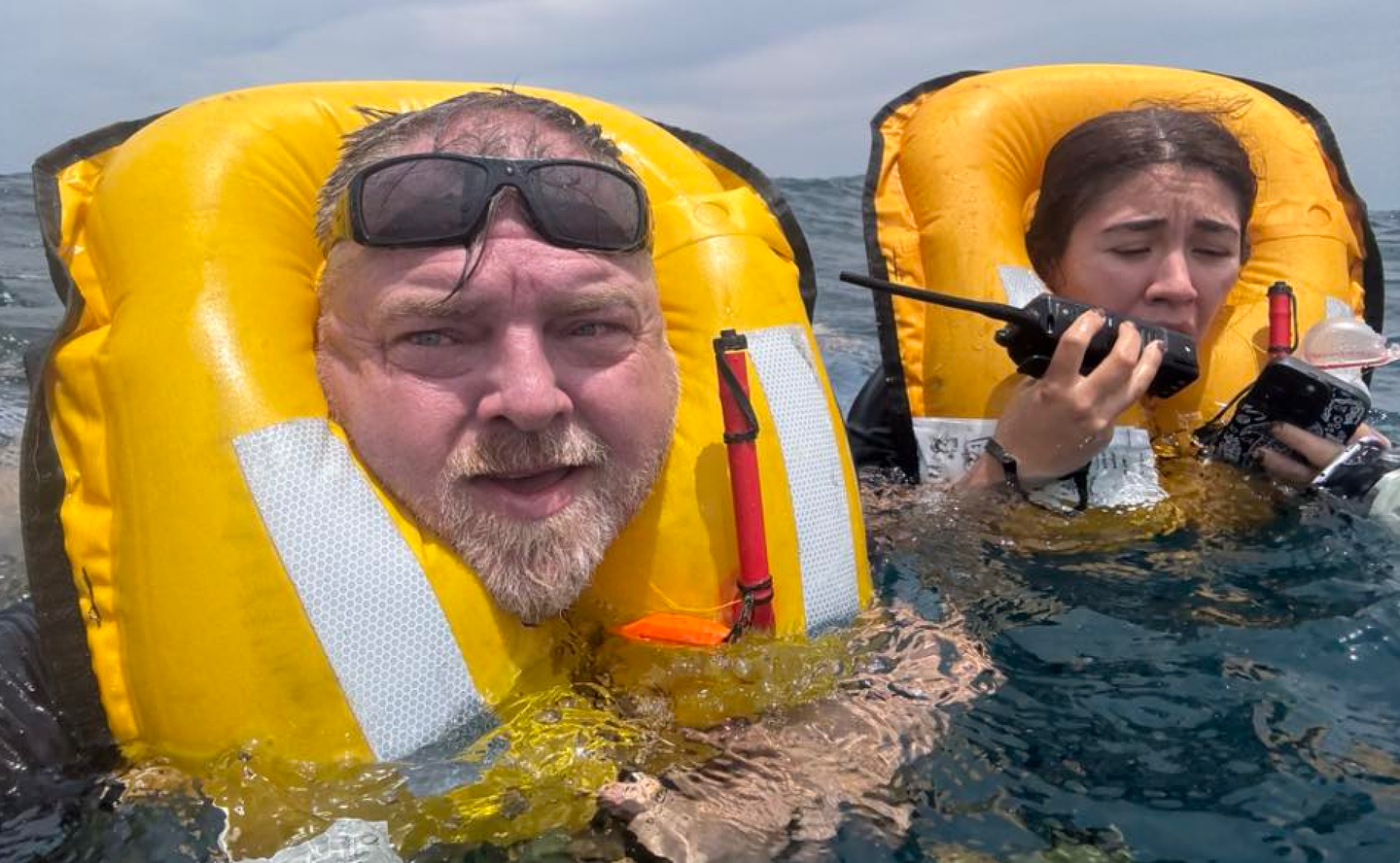Close-Up: Investigating TWA Flight 800
The NTSB continues its investigation into the crash of TWA flight 800. The FBI declared that it could find no evidence of a criminal act or that the airplane was accidentally shot down by a missile. Research and experimentation to date has not found what led to the explosion of the fuel/air mixture in the aircraft’s center wing tank. While it has not adopted a probable cause of the accident, the Safety Board has released a number of elements which will form a basis of its final report. Among them are the Factual Reports prepared by the Operational Factors Group, and the Cockpit Voice Recorder transcript. These provide our basis for a look at some of the facts as developed to date.

HISTORY OF THE FLIGHT:
 On July 17, 1996, at 2031 e.d.t., a Boeing 747131,registration numberN93119, crashed into the Atlantic Ocean, about eight miles south ofEast Moriches, New York, after faking off from John F. Kennedy International Airport(JFK). The airplane was being operated on an instrument flight rules (IFR) flight planunder the provisions of Part 121, on a regularly scheduled flight to Charles De GaulleInternational Airport (CDG), Paris, France, as Trans World Airlines (TWA) Flight 800. Theairplane was destroyed by explosion, fire, and impact forces with the ocean. All 230people aboard were killed.
On July 17, 1996, at 2031 e.d.t., a Boeing 747131,registration numberN93119, crashed into the Atlantic Ocean, about eight miles south ofEast Moriches, New York, after faking off from John F. Kennedy International Airport(JFK). The airplane was being operated on an instrument flight rules (IFR) flight planunder the provisions of Part 121, on a regularly scheduled flight to Charles De GaulleInternational Airport (CDG), Paris, France, as Trans World Airlines (TWA) Flight 800. Theairplane was destroyed by explosion, fire, and impact forces with the ocean. All 230people aboard were killed.
FLIGHT INFORMATION: The flight departed from TWA Terminal 5, gate 27. Scheduleddeparture time was 1900 e.d.t. Actual departure time was 2002. The one hour and two minutedelay in departure was due to a passenger/luggage mismatch and a piece of disabled groundequipment. The scheduled en route time was six hours and nine minutes. The flight wasnormally scheduled to terminate in Paris, but was extended to Rome due to cancellation ofa company Kennedy/Rome flight earlier in the day. A crew change was planned in Paris.
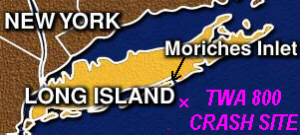
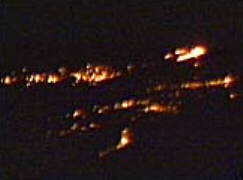 |
Total persons aboard the aircraft was two hundred thirty (230). Eighteen (18) wereactive crew, seventeen (17) were deadheading crew, and one hundred ninety five (195) werepassengers.
Takeoff was planned, and occurred, on runway 22R which is 10,500 feet in length and hasa slope of 0.00 degrees. Based on a temperature of 71 degrees Fahrenheit (22 degreesCelsius) and a flap setting of 10 degrees, takeoff speeds were calculated as a Vat(takeoff decision speed) of 113 knots, a Vr (takeoff rotation speed) of 146 knots, and aV2 (takeoff safety speed) of 153 knots. Engine pressure ratio (EPR) settings were 1.330standard and 1.455 maximum.
The dispatch release provided information that for flight 800 the takeoff weighs was590,441 pounds.
Based on the directed location and the program weight of the passengers, fuel, andcargo, the plane's takeoff center of gravity in mean aerodynamic chord (MAC) wascalculated to be 18.4 percent, and the horizontal stabilizer takeoff trim setting was 6.1unite nose up.
The dispatch release for the flight contained three open minimum equipment list items:
27512. Number 2 left canoe flap track fairing missing. Notice to dispatch is required due to performance penalty and a placard is required.
7813. Number 3 engine thrust reverser inoperative. This must be noted to the flightcrew and the associated systems for stopping the aircraft must be operational. The thrust reverser must be deactivated and the aircraft placarded.
3423. One of the two weather radar transmitters inoperative. One may be inoperative and the flightcrew must be advised with the aircraft properly placarded.
The Operations Group reviewed TWA procedures, voice recorder information, flightrecorder data, radar data, and performance data during the course of the investigation.This review provided no evidence that flight 800 wee operated in a manner inconsistentwith either Federal Air Regulations of TWA procedures.
CARGO: This flight was designated a "LIFE GUARD" flight because it wascarrying human eyes. These were carried in a special container on the flight deck.
A review of the cargo manifest and shipping documents was conducted by the operationsgroup during the investigation. No evidence wee found that TWA or regulatory requirementsfor packaging, labeling or loading were not complied with.
WEATHER INFORMATION: Recorded weather et John F. Kennedy International Airport(JFK) at 1950 e.d.t., was clear skies with 25 miles visibility, temperature 71 degrees F.,dew point 68 degrees F., wind from 220 degrees magnetic heading at 4 knots and analtimeter setting of 30.09. There were no remarks.
The 1950 e.d.t., recorded weather at Islip, New York (ISP), which is the nearestreporting station to the accident site, was scattered clouds at 2,500 feet, 8 milesvisibility, temperature 69 degrees F., dew point 68 degrees F., wind from 190 degreesmagnetic at 3 knots, and an altimeter setting of 30.09. Remarks were-haze.
A radiosonde balloon launched from Upton, New York, reached an altitude of 13,451 feetabove sea level at 1934 e.d.t. The readings at that altitude showed the wind from 297degrees magnetic at 18 knots. At 1939 e.d.t., the readings at 14,326 feet above sea levelwere winds from 300 degrees magnetic at 20 knots.
CREW INFORMATION: There were four flight deck crewmembers on duty. One captainwas serving as a check airman and wee the pilot in command. He was occupying the rightseat and wee filling the duties of the first officer on this flight. According to TWA, hehad approximately 4,700 hours in this make and model aircraft and approximately 17,000total flight hours. He held a first class medical certificate with no limitations.
He joined TWA as a pilot in 1964. He flew the Convair 880, Lockheed 1011, Boeing 727and 707. He received a type rating on the Boeing 747 in 1974, and qualified as a checkairman on 747's in 1993.
A second captain was occupying the left seat and was receiving a second Initialoperating experience. training flight as part of his qualification as a captain on theBoeing 747 type aircraft. He was filling the role of captain on this flight. According toTWA, he had approximately 5,490 hours in type and 18,800 total flight hours. He held afirst class medical certificate with the limitation that he possess glasses for nearvision. He joined TWA in 1965. He wee a captain on the Boeing 707 and Lockheed 1011. Hereceived a type rating on the Boeing 747 in 1990 and started captain training on theBoeing 747 in 1996.
A flight engineer was occupying the jump seat across from the engineer panel. He was acheck engineer conducting training of a "new hire" flight engineer. According toTWA, his flight engineer experience on the Boeing 747 was approximately 3,047 flighthours. He held a first class medical certificate with the limitation that he wear glassesfor near and distant vision.
The other flight engineer was a "new hire" with TWA and had no previousexperience as a flight engineer. He was on his sixth leg of initial operating experienceas a flight engineer on the Boeing 747 and had no previous flight engineering experience.According to company procedures, he should have been occupying the flight engineer stationand according to TWA records, he had approximately 2,520 total flight hours andapproximately 30 hours flight engineer experience, all of which was in the Boeing 747. Heheld a first class medical certificate with no limitations.
A review of flight time limits, duty period limits, and rest requirements was conductedby the operations group during the investigation. The review provided no evidence that anyflight deck crewmember was violating any of the limits established by regulation and/orthe pilots' working agreement.
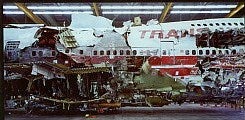
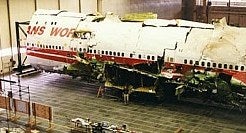 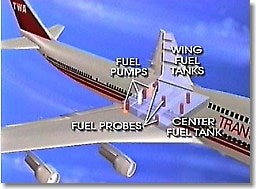 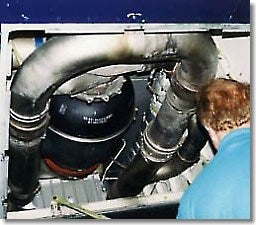 |
AIRCRAFT INFORMATION: The accident aircraft was a Boeing 747131. It wasmanufactured in 1971. According to the flight operations manual, the maximum certifiedgross weight of this aircraft wee 734,000 pounds.
According to a cargo service employee who was working the flight, while the aircraftwas at the gate he was asked by a crewmember about the heat in the aft cargo compartment.He stated that the compartment was "hot.. The crewmember then acid something about"okay that's the reason for the lights
There is an aft cargo overheat sensing system associated with the aft cargo heatsystem. According to the TWA aircraft operating manual, when the temperature reachesapproximately 110 degrees Fahrenheit, heat to the compartment is automatically eliminated.When the temperature drops below approximately 80 degrees Fahrenheit, the automaticcontrol is reactivated. According to a TWA check engineer interviewed during theinvestigation, curing warm days, it is not uncommon for this light to come on during thetime the aircraft is parked at the gate, and once the cargo doors are closed the lightextinguishes. The aft cargo overheat light must be extinguished prior to taxi.
During the time the aircraft was on the ground at JFK, after its arrival from Athens,Greece, and prior to its departure for Paris, TWA maintenance personnel worked on thenumber three engine thrust reverser. In an interview with the mechanic who worked on thereverser, he said he was unable to correct the problem due to limited ground time and hemechanically locked the thrust reverser in the forward thrust position in accordance withmaintenance directives and reported his activities appropriately. Investigation confirmedreporting of this maintenance activity.
During the time the aircraft was being fueled at JFK, the automatic (volumetric)shutoff to the fueling system activated before it should have. The automatic shutoff isdesigned to prevent more fuel than is desired from being pumped into the aircraft's tanks.According to the person who was fueling the aircraft and TWA maintenance personnel, thisis a common occurrence. The fueler stated during an interview that he reported theshutdown and a TWA mechanic came out and "pulled a circuit breaker and fuse. and hefinished fueling the aircraft manually. According to the fueler, when he finishedrefueling the aircraft, the mechanic reset the fuse and circuit breaker. This activity wasconfirmed during interviews with the TWA mechanics who were involved.
According to the fueling record, the airplane carried a total of 181,800 pounds of fuelfor the flight, including 300 pounds remaining in the center wing tank after the flightfrom Athens.
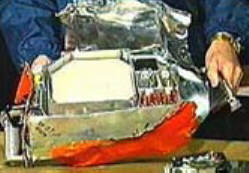
 |
COCKPIT VOICE RECORDER: The CVR unit arrived in the NTSB's Washington lab in alarge cooler still submerged in water. The exterior of the CVR was extremely dented anddistorted. The front panel of the CVR was ripped from the unit and was only being held onby the underwater locating beacon mount. The normal carrying handle was missing. The dataplate that is normally attached to the front panel was also missing and never recovered.
The protective dust cover had to be cut in several places before it could be removed.The interior crash enclosure appeared to be in good condition. There were only a few minorscratches and dents noted. The interior tape reel assembly was wet. Several small thinplastic reel pieces were broken off and were found loose inside of the enclosure. Therecording media was wet, but otherwise appeared to be in good condition. The tape was notbroken or physically damaged from the accident. There were no signs of any fire or heatdamage noted to either the exterior or the interior of the unit. The underwater locatorbeacon that was installed on the CVR was slightly dented and scratched, but operatednormally when tested in the lab.
The recording consisted of four channels of good quality audio information. One channelcontained the cockpit area microphone audio information. The other three channelscontained the Captain's, the First Officer's, and the Second Officer's radio/intercominformation.
The recording starts at 1959:40 e.d.t., and continues uninterrupted until 2031:12e.d.t., when electrical power was removed from the unit. When the recording starts, theKennedy gate agent is in the cockpit telling the crew that they are ready for departure.The aircraft's door is closed and the crew requests pushback from the gate at 2001:42.During the pushback and before taxi, the crew starts the number 1, 2, and 4 engines. Theflight contacts ground control at 2008:13 and requests taxi clearance. During the taxi,the crew starts the number 3 engine at 2014:29. The flight is cleared for takeoff onrunway 22 right at Kennedy at 2018:21.
The takeoff and climb appear normal. The flight contacts Kennedy departure control at2020:14. They are subsequently turned over to Boston Center at 2023:37. Boston Centerinstructs the crew to continue their climb and maintain fifteen thousand feet at 2030:15.The acknowledgment of this transmission at 2030:19.2 is the last radio transmissionreceived from the aircraft. The recording stopped at 2031:12.
TWA 800 CVR Transcript Legend RDO = Radio transmission from accident aircraft CAM = Cockpit Area Microphone sound or source TWR = JFK Local Controller (tower) * = Unintelligible word |
Only radio transmissions to and from the accident aircraft were transcribed. Therecording began at the gate with conversations regarding loading of passengers. We pick upthe transcript after the flightcrew contacted the tower local controller.
2017:18 TWR: TWA eight hundred heavy caution wake turbulence from a seven fifty sevenrunway two two right taxi into position and hold.
2017:24 RDO2: TWA's eight hundred heavy lifeguard position and hold two two right.
2017:24 CAM1: position and hold two two right.
2017:31 CAM1: will you alert the cabin please.
2017:40 CAM3: flight attendants please be seated for takeoff.
2017:55 CAM4: * * * *.
2018:03 CAM2: now that's better.
2018:04 CAM3: now it's coming on *.
2018:06 CAM1: I'll just extend it out to that line.
2018:07 CAM3: * sure *.
2018:09 CAM2: yeah that's one of the ways you test yourself too is whether when youget rolled out is the whole airplane longitudinally lined up.
2018:15 CAM1: yeah.
2018:21 TWR: TWA eight hundred heavy lifeguard wind's two four zero at eight runway twotwo right cleared for takeoff.
2018:27 RDO2: TWA's eight hundred heavy lifeguard cleared for takeoff two two right.
2018:31 CAM1: before takeoff checklist.
2018:33 CAM3: before takeoff checklist. icing considerations?
2018:34 CAM1: checked.
2018:35 CAM3: cabin alert?
2018:36 CAM1: checked.
2018:36 CAM3: transponder?
2018:37 CAM1: that's checked.
2018:39 CAM3: ignition?
2018:40 CAM: [ sound of click].
2018:41 CAM1: flight start.
2018:42 CAM3: body gear steering?
2018:43 CAM1: disarmed.
2018:44 CAM2: clocks.
2018:46 CAM3: before takeoff checklist is complete.
2018:48 CAM1: thank you.
2018:49 CAM4: get right up in there.
2018:51 CAM: [ sound of increasing engine noise].
2018:59 CAM1: trim throttles.
2019:14 CAM2: eighty knots.
2019:23 CAM2: Vee one.
2019:35 CAM2: Vee R.
2019:41 CAM: [sound of two clicks].
2019:43 CAM1: gear up.
2019:44 CAM2: gear up.
2020:00 TWR: TWA eight hundred heavy contact New York departure one three five pointniner good evening.
2020:05 RDO2: TWA's eight hundred heavy good night.
2020:14 RDO2: Kennedy departure TWA's eight hundred heavy lifeguard leaving ninehundred climbing five thousand.
2020:19 DEP: lifeguard TWA eight hundred heavy New York departure radar contact climband maintain one one thousand.
2020:24 RDO2: TWA's eight hundred heavy climb and maintain one one thousand.
2020:29 CAM1: climb to one one thousand and maintain.
2020:44 DEP: TWA eight hundred heavy turn left heading one five zero.
2020:47 CAM1: left to one five zero.
2020:48 RDO2: TWA's eight hundred heavy turn left heading one five zero.
2020:51 CAM1: flaps five.
2020:53 CAM2: flaps five.
2021:11 CAM1: flaps one.
2021:12 CAM2: flaps one.
2021:26 CAM1: flaps up.
2021:29 CAM2: say what?
2021:29 CAM1: flaps up.
2021:30 CAM2: flaps up.
2021:48 CAM1: climb thrust.
2022:01 DEP TWA lifeguard TWA eight hundred heavy turn left heading zero seven zero.
2022:07 RDO2: TWA's lifeguard eight hundred heavy turn left heading zero seven zero.
2022:11 CAM1: left zero seven zero.
2022:29 DEP: TWA eight hundred heavy or lifeguard TWA eight hundred heavy turn leftheading zero five zero vector climbin' around traffic.
2022:35 RDO2: TWA's eight hundred heavy turn left heading zero five zero.
2022:41 CAM1: left zero five zero climb vector.
2022:44 DEP: TWA eight hundred heavy the traffic in the turn will be three o'clock andfive miles northeast bound four thousand nor is a company seven two five five in trailwill be a SaabFairchild when you're out of five I'll have on course.
2022:54 RDO2: TWA's eight hundred heavy understand.
2022:58 CAM1: he's at three o'clock?
2023:00 CAM2: yeah.
2023:02 CAM2: that's the problem.
2023:19 DEP TWA eight hundred heavy direct Betty resume own navigation.
2023:22 RDO2: TWA's eight hundred heavy direct Betty own navigation.
2023:26 CAM1: direct Betty and our own nav.
2019:52 CAM1: that's alive.
2023:37DEP: TWA lifeguard TWA eight hundred heavy contact Boston one three two pointthree.
2023:38 CAM2: huh.
2023:39 CAM1: direct Betty. correct?
2023:42 RDO2: TWA's eight hundred heavy ah say again the frequency.
2023:44 DEP: one three two point three.
2023:46 RDO2: TWA's eight hundred heavy good day.
2024:01 CAM: [ sound of noise of recording tape].
2024:30 CAM1: seems like a home sick angel here (*/ awesome).
2024:36 CAM2: it's bleeding off airspeed that's why.
2024:38 CAM1: yeah *.
2024:41.7 RDO2: New York center TWA's lifeguard eight hundred heavy eight thousandtwo hundred climbing one one thousand.
2024:48 CTR: TWA eight hundred Boston center roger climb and maintain one threethousand.
2024:53.4 RDO2: TWA's eight hundred heavy climb and maintain one three thousand.
2024:57 CAM1: climb and maintain one three thousand.
2025:31 CTR TWA eight hundred what's your rate of climb?
2025:34.5 RDO2: TWA's eight hundred heavy ah about two thousand feet a minute hereuntil accelerating out of ten thousand.
2025:41 CTR roger sir climb and maintain flight level one niner zero and expeditethrough fifteen.
2025:47.1 RDO2: TWA's eight hundred heavy climb and maintain one niner zero andexpedite through one five thousand.
2025:53 CAM1: climb to one nine zero expedite through one five thousand.
2025:57 CAM3: pressurization checks.
2025:59 CAM3: (takeoff) thrust go on cross feed?
2026:02 CAM?: ah.
2026:04 CAM1: yeah.
2026:07 CAM3: I'll leave that on for just a little bit.
2026:12 CAM3: is that right?
2026:13 CAM4: yes.
2026:24 CTR:TWA eight hundred amend the altitude maintain ah one three thousandthirteen thousand only for now.
2026:29 CAM1: thirteen thousand.
2026:30.3 RDO2: TWA's eight hundred heavy okay stop climb at one three thousand.
2026:35 CAM1: stop climb at one three
thousand.
2026:51 CAM1:*.
2026:59 CAM2: twelve for thirteen.
2027:35 CAM:[sound of click].
2027:47 CAM: [sound of altitude alert tone].
2028:13 CTR: TWA eight hundred you have traffic at one o'clock and ah seven miles southbound a thousand foot above you he's ah Beech nineteen hundred.
2028:20.6 RDO2: TWA's ah eight hundred heavy ah no contact.
2028:22.5 RDO3:FIC TWA eight hundred.
2028:25 FIC: TWA eight hundred.
2028:25.7 RDO3: Eight hundred with an off report ah plane number one seven one onenine we're out at zero zero zero two, and we're off at zero zero one nine, fuel one sevennine decimal zero, estimating Charles De Gaulle at zero six two eight.
2028:4 FIC: TWA eight eight hundred got it all.
2028:44.8 RDO3: Thank you.
2029:15 CAM1: look at that crazy fuel flow indicator there on number four.
2029:23 CAM1: see that.
2029:35 CAM1: some where in here I better trim this thing (in/up).
2029:39 CAM2: huh?
2029:39 CAM1: some place in here I better find out where this thing's trimmed.
2030:15 CAR TWA Bight hundred climb and maintain one five thousand.
2030:18 CAM1: climb thrust.
2030:19.2 RDO2: TWA's eight hundred heavy climb and maintain one five thousandleaving one three thousand.
2030:24 CAM1: Ollie.
2030:24 CAM3: huh.
2030:25 CAM1: climb thrust.
2030:28 CAM1: climb to one five thousand.
2030:35 CAM3: power's set.
2030:42 CAM: [sound similar to a mechanical movement in cockpit]
2031:03 CAM: *.
2031:05 CAM: [sounds similar to recording tape damage noise].
2031:12 — end of recording.





